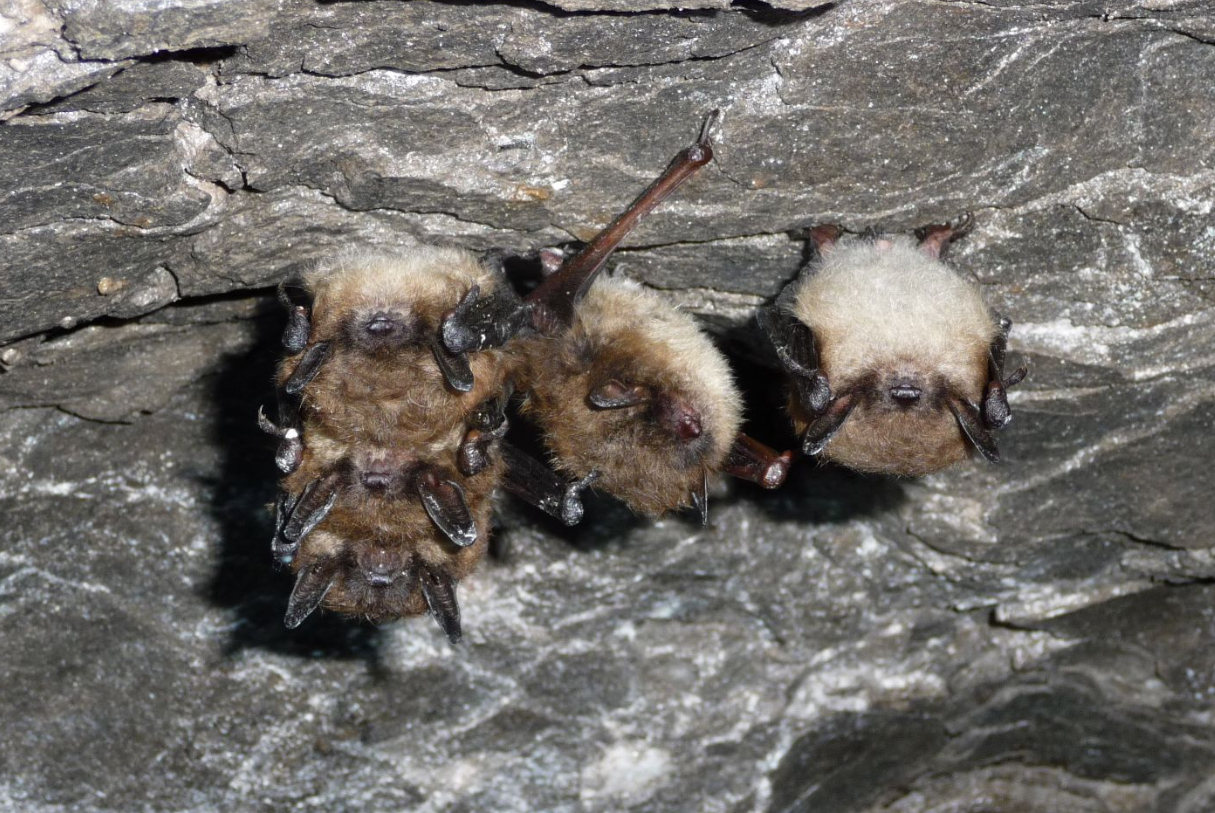Bats and Parks Canada

While there are more than 1,000 species of bats on Earth, only seventeen species are regularly seen in Canada. The health and numbers of several bat species in North America are being compromised by a relatively new disease called white-nose syndrome, which could have catastrophic consequences for at least three Canadian species if no action is taken.
The Parks Canada Agency is committed to doing its best to slow the spread of white-nose syndrome using the Canada National Parks Act and its associated regulations to provide protection for bats and their habitat throughout Parks Canada sites. Parks Canada manages park lands and historic sites that include caves, forests and even buildings that are ideal habitat for bats throughout their life cycle. The ability – and responsibility – of Parks Canada to keep these places intact and functional helps bats stay as healthy as possible and will hopefully make them more resilient to threats such as white-nose syndrome. Parks Canada Agency bat researchers collaborate with other bat experts to conduct research with the goal of protecting and preserving them.
Bats and white-nose syndrome
Transcript
Parks Canada Agency Branding Logo
Music plays
Photo of bat in flight
Text on screen: BATS AND WHITE-NOSE SYNDROME
Music continues playing
Bats flying in cave
Bats are fascinating mammals,and are important components of healthy ecosystems.
Photograph of a bat eating a moth
The bats native to Canada are insect-eaters,and their value in controlling crop and forest pests
is estimated in the billions of dollars.
Photo of bat with white muzzle
Yet, three bat species in Canadaare now listed as endangered
because of a fungal disease called white-nose syndrome.
Map of New York State, zoom out to reveal Ontario and other parts of the United States.
The fungus that causes white-nose syndromemay have come from Europe.
It has spread quickly throughout Eastern North America,
and may continue to spread.
Bats hibernating
The fungus can transfer quickly between batsduring winter hibernation,
when they gather in underground openings,
like caves or abandoned mines.
Bat climbing snowy rocks
Infected bats can arouse early from hibernation.Dead bat on a snowed log
With no insects to eat,they use up their stored energy reserves, and die.
Photograph of a dead bat on snow
Since 2006, millions of North American bats have diedfrom white-nose syndrome.
Fade to black
Music continues
Fade in from black to photograph of 3 cavers looking into cave from outside
Parks Canada manages national parks
and historic sites across the country
Fort Lennox building
including both buildings and caves where bats can be found.Group of bats in a cave
Across the Parks Canada network, we are protecting batsin all stages of their lifecycle.
Photograph of a scientist handling bats
Parks Canada collaborates with bat expertsto better understand the impacts of white-nose syndrome
Photograph of a scientist's hand with gloves on holding a bat
and to find ways to delay its spread.Parks Canada agents inside the cave
Park staff are identifying bat habitat,and monitoring bat populations and health.
Photograph of a scientists at the entrance of a cave with white suits
Scientists and park staff who monitor batsdecontaminate their clothing and equipment,
to reduce the risk of spreading the disease.
Photographs of artificial bat houses
Artificial bat houses, when they are placedin the right location, can provide roosting habitat
for hundreds of bats at a time.
Webcam video of bats moving around
Webcams installed in Parks Canada buildingscan help visitors observe bats first-hand,
and provide opportunities to study their behaviour.
Bat moving around in cave. A second bat flies into frame.
You can help us to protect bats and their habitats.Bats in a cave flying around
Respect all closures of caves and other sites.Avoid entering caves, since humans can carry spores
on their clothing or footwear, and can unintentionally move
the fungus to new areas.
Group of bats with condensation
The fungus can be present even if bats are not.Group of bats in a cave Entrance of a cave. Parks Canada Agents walk into the cave.
Anyone entering a Parks Canada sitewhere bats are present must have a permit,
and will be required to follow a decontamination protocol
Screen shot of CWHC website.
Text on screen: Canadian Wildlife Health Cooperative
www.cwhc-rcsf.ca/wns
which is available on the website of theCanadian Wildlife Health Cooperative.
Group of bats in a cave
We invite you to visit Parks Canada sitesto learn about bats and the challenges they face,
and share this information with others.
Group of active bats in cave
Bats are at great risk.Bats in a cave flying around
We all have the responsibilityto do everything we can to help them.
Photograph of bat on hat with Parks Canada logo
Join Parks Canada and other agenciesto reduce the threats faced by North American bats.
Fade to black
Fade into text on screen:
Photo credits by order of appearance: B.Fenton, H.Broders, and J.Segers
Extra footage: Carl Mrozek and Hugh Broders
Graphic on screen: Parks Canada Branding
Music ends
Fade to text on screen: © Her Majesty the Queen in right of Canada, represented by Parks Canada Agency, 2016.
To find more, click on the following links:
Parks Canada sets its radar on helping Bats (PDF, 19.43 MB)
Canadian National White-nose Decontamination Protocol (YouTube video)
- Date modified :